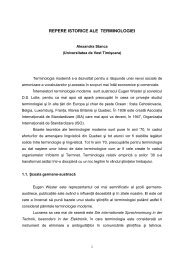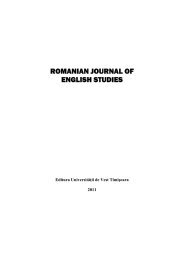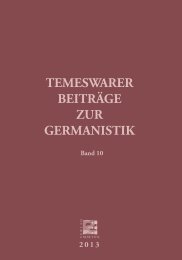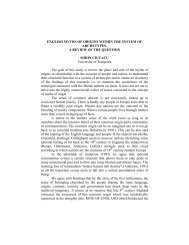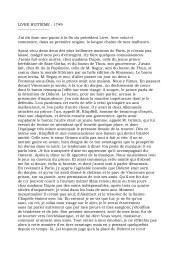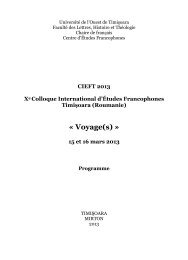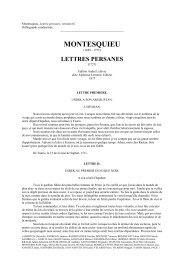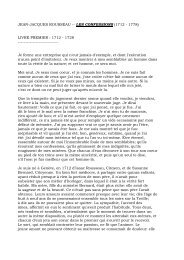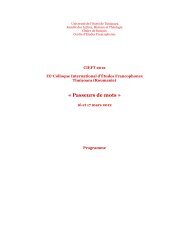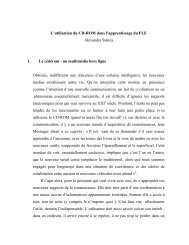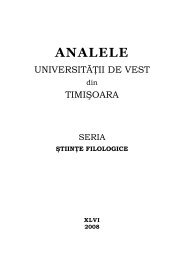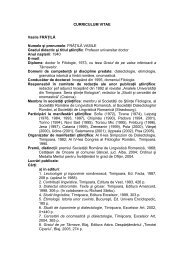TRANSLATION AND MEANING: A CULTURAL- COGNITIVE ...
TRANSLATION AND MEANING: A CULTURAL- COGNITIVE ...
TRANSLATION AND MEANING: A CULTURAL- COGNITIVE ...
You also want an ePaper? Increase the reach of your titles
YUMPU automatically turns print PDFs into web optimized ePapers that Google loves.
sistem RBTR naţional şi au un un cont RBTR deschis la banca<br />
centrală naţională respectivă …”<br />
( 32001O0003)<br />
In either of the cases mentioned above, the role of the rheme as<br />
definition is that of preventing any ambiguity in the interpretation of the<br />
meaning that the text in question is meant to convey.<br />
Additionally, the EU documents offer numerous examples of rhemes<br />
organized as enumerations that extend over several numbered paragraphs.<br />
These rhemes are rendered by parallel syntactic structures that all convey<br />
information about one and the same theme:<br />
e.g. ST: “This Directive applies to:<br />
a) minimum periods of daily rest, weekly rest and annual leave, to breaks<br />
and maximum weekly working time; and<br />
b) certain aspects of night work, shift work and patterns of work.”<br />
TT: “Prezenta directivă se aplică:<br />
a) perioadelor minime de repaus zilnic, repaus săptămânal şi concediu<br />
anual, precum şi pauzelor şi timpului de lucru maxim săptămânal; şi<br />
b) anumitor aspecte ale muncii de noapte, ale muncii în schimburi şi ale<br />
ritmului de lucru.”<br />
(32003L0088)<br />
Even if the rhematic arrangement illustrated above is not restricted to<br />
the texts belonging to the EU legislation, and is present in the case of other<br />
types of legal-administrative documents (such as, for example, the<br />
normative documents originally written in Romanian), it highlights an<br />
important norm of the category of texts under analysis. This happens mainly<br />
because the feature in question makes a great contribution to the clarity and<br />
the concision of the EU documents, creating, at the same time, a marked<br />
impression of precision and technicality on their recipients.<br />
3. Conclusions<br />
As the analysis underlying the present paper indicates, the Subject<br />
noun phrase in thematic position can be considered as representing the norm<br />
in the case of the EU documents. The themes in these texts function like a<br />
skeleton that holds together concepts referring to the authority which issues



